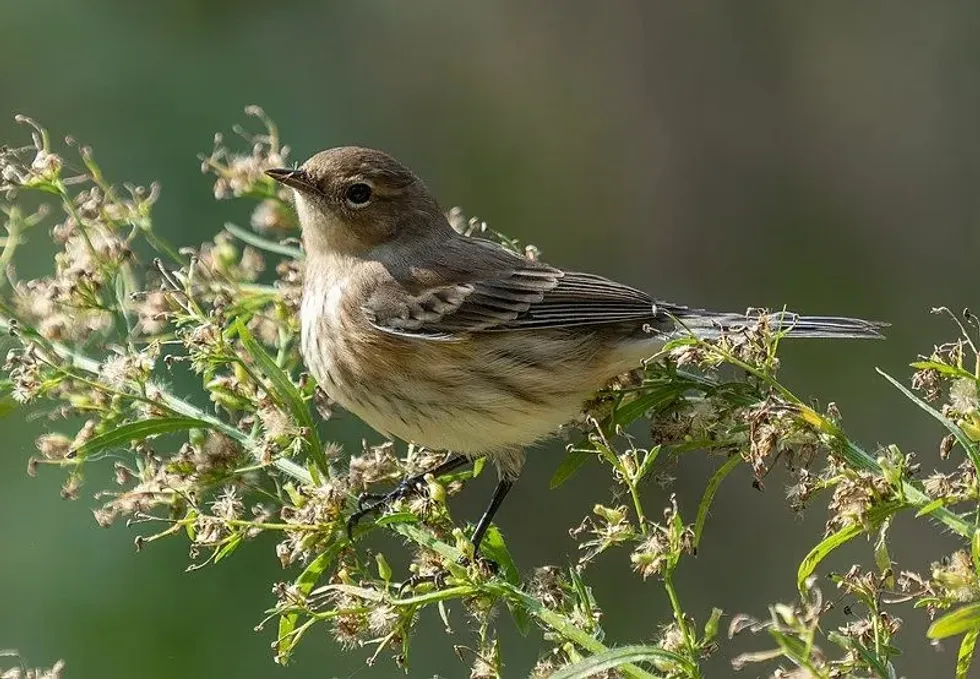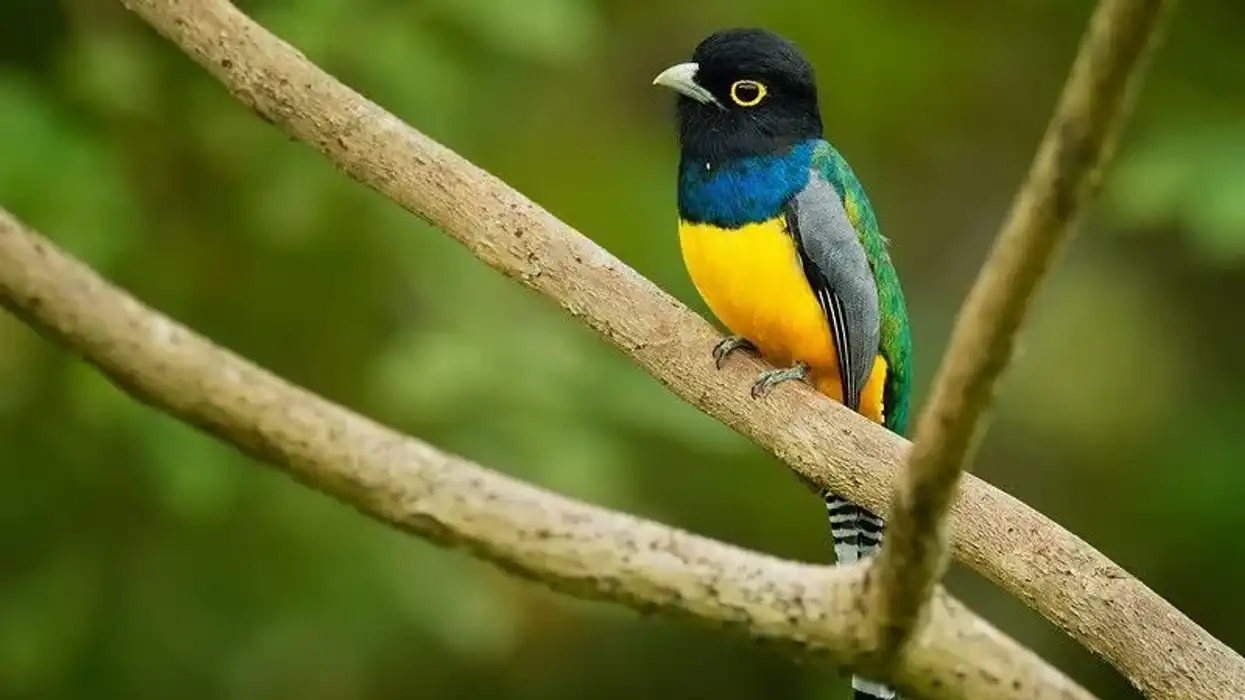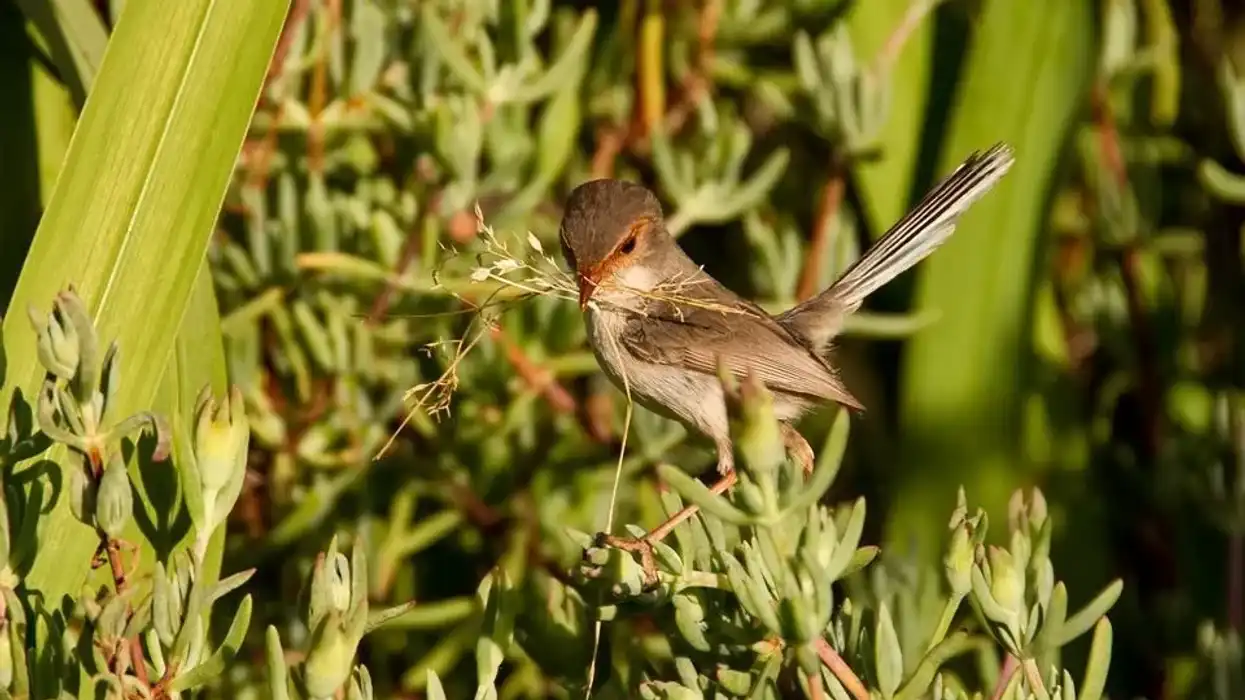The myrtle warbler or yellow rumped warbler (Setophaga coronata coronata) is called a New World warbler. Being from the New World, it’s a well known warbler across the North America continent because of how widely it is distributed.
It is also widely found in Canada. Identifying yellow rumped warblers is easy. Males of this species have a yellow throat and crown, slate blue back, yellow rump, and flank patch.
The female however is a little more brown in color. The female also has brown breast streaks. It is usually seen with another one of its cousins called the Audubon's warbler of the west.
These two are separate species and can be distinguished from one another with their color and their voices. The yellow rumped warbler myrtle song is quite interesting.
Yellow rumped warblers, formerly known as Dendroica coronata, are also medium to short migratory birds. During the winter, they travel as far as Central America. Some are seen in the Caribbean and very few ever make it to central Panama.
For more relatable content, check out these cape may warbler facts and mourning warbler facts for kids.
Myrtle Warbler Interesting Facts
What type of animal is a myrtle warbler?
The yellow rumped warbler (formerly Dendroica Coronata) is a type of bird that belongs to the Parulidae family. Some other types of warblers are Kirtland's warbler and aquatic warbler.
What class of animal does a myrtle warbler belong to?
The myrtle warbler is a bird, specifically an Animalia which belongs to the Aves class.
How many myrtle warblers are there in the world?
It is estimated that the global population of myrtle warblers is around 90 million individuals. They are not rare.
Where does a myrtle warbler live?
A myrtle warbler is considered to be a native bird of North America, particularly its eastern part. They are usually found far north in a variety of places across the American continent. They have been spotted in places like open woods, brushy areas, gardens, beaches, residential areas, and orchards.
What is a myrtle warbler's habitat?
Places like open woods, gardens, beaches, and orchards are usually favored by them. During their breeding period, they move towards coniferous and mixed woodlands and breed high up in conifers. During winters or migration, they choose to flock with their own species and forage on twigs, leaves, and on the ground.
Who do myrtle warblers live with?
Yellow rumped warblers usually mingle a lot with their sub-species and other birds while living in various parts of the continent. These North American birds are found in breeding areas with their cousins the Audubon's warbler and they are sometimes are known to breed with them.
How long does a myrtle warbler live?
An average myrtle warbler lives for around 10 years in the wild.
How do they reproduce?
The yellow rumped warbler breeds and reproduces in the northeast of America as well as other regions in North America. The area that these birds choose to breed in is usually in small spots where there are conifers in dense and wet forests.
Male myrtles arrive before the females on the breeding grounds. They wait for the females and once they arrive, they form monogamous pairs and the females start preparing the nest in their chosen breeding ground.
After breeding, the male myrtle continually brings food for the female who spends her time in the nest itself. The female will lay four to five eggs which she partially covers until the end of the incubation period.
This period lasts between 12-13 days. After hatching, the male myrtle and female myrtle will feed the young together until they are ready to leave the nest.
What is their conservation status?
These North American birds have a generalized habitat for both the summer and the winter. They keep a rather respectable number in terms of population.
They are present in abundance across the northeastern and the eastern American continent and their numbers keep increasing constantly. They are currently put under the Least Concern status and have a general population of around 90 million individuals.
Myrtle Warbler Fun Facts
What do myrtle warblers look like?
A yellow rumped warbler has a tiny head and looks smaller than an average bird. Aesthetically, a yellow rumped warbler has a yellow crown patch.
The yellow patch is more evident in males than in females of this species. The females of this species have a brown cover over their back and in their breast streaks. Visibly, the males and females also have a white-tipped and streaked tails.
A myrtle warbler also weighs a meager 0.42-0.45 oz (12-13 g) as an adult. The eggs of a myrtle warbler that are laid in a nest look white, speckled with brown, reddish-brown, gray, or purplish gray.
How cute are they?
A yellow rumped warbler looks quite cute. With its tiny and small outlook and its yellow rump, the warbler is pretty to look at.
How do they communicate?
These North American birds sing beautifully to communicate with each other. Its songs are heard quite often and quite well in open woods, orchards, beaches, and other habitats where they thrive.
The trill-like songs that they sing is nearly indistinguishable but it consists of a three to four syllable 'tyu-tyu-tyu-tyu'. A group of these birds can sometimes cause these birds to be more loud than usual in the wild.
How big is a myrtle warbler?
An average yellow rumped warbler is 4.7-5.5 in (12-14 cm) tall. In simple comparison, an average myrtle warbler is as tall as the length of a Canadian dollar. It seems like a fair comparison given that most of these birds are often found in the northeastern region of the continent, especially in Canada and northeastern America.
How fast can a myrtle warbler fly?
Due to its tiny and compact build, a yellow rumped warbler is known to have a quick flight. Experts haven’t measured the exact speed but they call its flight as rapid flight with quick wing strokes.
This basically means that it has a rather quick movement speed and can quickly dodge and evade any attacking predator. It also allows it to fly with extreme precision between the coniferous forests during the winter season.
How much does a myrtle warbler weigh?
The yellow rumped warbler is a small and frail creature. With a short height and light weight owing to its hollow bones like all birds, an adult myrtle warbler weighs as much as a AAA battery.
What are the male and female names of the species?
There are no distinct names for the males and females of this species. A male yellow rumped myrtle warbler has a slate blue back. Its crown, rump and flank patch are yellow. The female shares a similar pattern but its only discernible feature is the brown on her back and breast streaks.
What would you call a baby myrtle warbler?
There are no specific names given to a baby yellow rumped warbler. They are called the young of the myrtle warbler or a chick.
What do they eat?
Yellow rumped warblers are known to be an insectivorous species. This means that they predate on a wide variety of bug species.
Their prey includes caterpillars, leaf beetles, weevils, bark beetles, scale insects, ants, aphids, caddisflies, crane flies, grasshoppers, gnats, and spiders. They are also known to eat a dangerous forest pest called the spruce budworm.
During the winter or when they are migrating, their diet moves away from insects due to their unavailability. They then turn towards fruits like juniper berries, wax myrtle, poison ivy, greenbrier, poison oak, grapes, dogwood, and Virginia creeper.
Are they dangerous?
The myrtle warbler can be called anything but dangerous, except for the various bugs it considers delicious. The myrtle warbler is small, frail, and often non-bothersome to humans.
Would they make a good pet?
A myrtle warbler is known to be kept as a pet because of how often it is visible in the American continent. If one still wishes to keep a yellow rumped warbler, it is advised that they are kept in pairs as they are monogamous in nature.
Their diet includes lots of insects and fruits. You may keep them as a pet but they are sure to bother you at some point with their high-pitched songs.
Did you know...
Audubons and yellow rumped warblers are two separate species. They can be differentiated from myrtle warblers by their yellow throat compared to the myrtle warbler's white throat. Males also have more white in their wings while females lack the dark patches that myrtle warblers have.
What does the myrtle warbler's call sound like?
The myrtle warbler has two main calls. The sharp ‘chek’ sound is a little different for the myrtle and the Audubon's warbler. Both sexes of the warbler are known to make these calls when in flight or when they’re foraging. During flight, they also make a soft ‘psit’ and a high ‘tsee’ sound.
What is the symbolism of the myrtle warbler?
People often associate seeing them as a sign that the bird is asking us to express our ideas and be more vocal about our feelings. It also means that it is time to mesmerize people with your personality.
Here at Kidadl, we have carefully created lots of interesting family-friendly animal facts for everyone to discover! Learn more about some other birds from our palm warbler facts and magnolia warbler facts pages.
You can even occupy yourself at home by drawing one on our Myrtle Warbler coloring pages.









